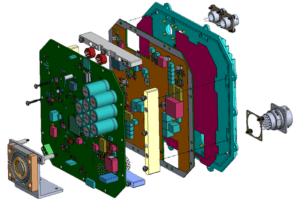Semi-Additive Manufacturing
The semi-additive manufacturing process, a significant aspect of modern manufacturing technologies, stands as a hybrid approach combining the principles of both additive and subtractive manufacturing. This process has gained prominence in various industries, including electronics, aerospace, and medical device manufacturing, due to its unique capabilities and advantages.
Foundation of the Process
At its core, the semi-additive process begins similarly to additive manufacturing, where material is deposited layer by layer to create a product. However, unlike purely additive processes, which solely build upon the material, semi-additive manufacturing also incorporates subtractive techniques. This integration allows for greater precision and complexity in the final product.
Application in Electronics
A prime example of the semi-additive process is in the production of printed circuit boards (PCBs). The process begins with a thin layer of conductive material, often copper, deposited onto a non-conductive substrate. The desired circuit pattern is then added layer by layer using an additive process. Once the circuit layers reach the required thickness, excess material is removed using a subtractive process, such as etching, to reveal the final circuit design. This method allows for the creation of highly intricate and dense circuit patterns, essential in modern electronics.
Benefits and Advantages
One of the main advantages of the semi-additive process is the ability to produce complex geometries and fine details that might be challenging or impossible with purely additive or subtractive methods. This ability is particularly beneficial in industries where precision and miniaturization are critical. Additionally, the process can be more material-efficient than traditional subtractive methods, as it reduces the amount of material wasted.
Challenges and Considerations
Despite its advantages, the semi-additive process does come with challenges. The combination of additive and subtractive methods can require sophisticated equipment and software, leading to higher initial investment costs. Additionally, the process can be more time-consuming than purely additive or subtractive methods, as it involves multiple stages of material deposition and removal.
Future Prospects
As technology advances, the semi-additive manufacturing process is expected to evolve and become more efficient. Innovations in materials and process control are likely to expand the range of applications for this hybrid manufacturing method, offering new solutions to complex manufacturing challenges. The semi-additive process, with its unique blend of additive and subtractive techniques, is poised to play a significant role in the future of manufacturing, driving innovation and efficiency across various industries.



